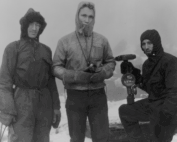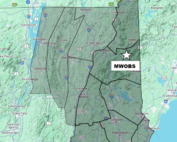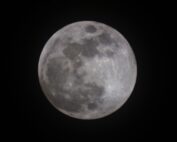An Aurora Borealis for the U.S. But Not Us
2013-04-13 23:43:20.000 – Ryan Knapp, Weather Observer/Meteorologist
Let me start by reminding everyone that I am a meteorologist which means I study weather, not space or meteors and I work and the Mount Washington Observatory which observers the weather and not space or meteors. I just want to make that clear because I am about to talk about space and I don’t want there to be any confusion as to my profession and about where I work. So with that being said, let get to tonight’s Observer Comment.
Working nights up here, I am constantly looking for interesting things that may grace the skies for me to look for while doing my hourly weather observations. In the summer, it might be a line of thunderstorms lighting up the horizon or the sky above me. When the moon is full it might be an interesting reflection off the Atlantic Ocean or a colorful corona around the moon itself. Occasionally it might be a meteor shower or the rare passing of a comet. And now that we are heading into what I have heard referred to as a solar maximum, I continually monitor for the possibility to see the skies dancing with light from the occasional Aurora Borealis. So, when I checked the NOAA-NWS Space Weather Prediction Center page back on April 11, I was really excited to read about a detected Coronal Mass Ejection (CME). Even more interesting about this CME was the fact that it was the largest earth-directed CME of the year so far.
Now, when it comes to space, I am an amateur at best. So, if you want me to explain the how’s and why’s behind a CME, I will have to check with Google and get back to you. However, when I read the words “large,” “earth-bound,” and “CME,” I know just enough to know that this means there is a high probability for a viewable Aurora Borealis at our latitude…if we are clear (and preferably “moonless”). So the past few days, I have been checking out every page I know of, tracking the progress of the incoming CME and when it might be visible.
Every site I checked continually stated that the peak Aurora viewing would be tonight into Sunday morning. Once I had that nailed down, my attention turned to the weather since we would need to be clear to view anything that might occur. Back on Thursday, clearing on the summit looked plausible, on Friday, clearing looked possible but was looking far less likely, and then this morning, clearing looked near impossible. And that leads to tonight…where we are currently in dense fog (with a visibility of 25 feet), it is snowing, and looking at satellite loops for cloud cover, there isn’t even a hint of a break overhead even if the fog does break. So, it is looking extremely unlikely like I/we will get to see an Aurora this time from the summit. However, the night still has a few more hours, so I/we still have a sliver of hope. However, if you are lucky enough to be in the clear tonight, check out the links below and continue to check the night sky (if viewable), you just might just get a chance at viewing an Aurora Borealis. Happy sky watching!
Some available pages for current Aurora Borealis information:
http://www.swpc.noaa.gov/
http://www.swpc.noaa.gov/ftpdir/latest/three_day_forecast.txt
http://spaceweather.com/
http://www.swpc.noaa.gov/pmap/
http://helios.swpc.noaa.gov/ovation/
http://www.geo.mtu.edu/weather/aurora/
http://www.gi.alaska.edu/AuroraForecast
Ryan Knapp, Weather Observer/Meteorologist
A Look at The Big Wind and Measuring Extreme Winds At Mount Washington
A Look at The Big Wind and Measuring Extreme Winds at Mount Washington By Alexis George Ninety-one years ago on April 12th, Mount Washington Observatory recorded a world-record wind speed of 231 mph. While
MWOBS Weather Forecasts Expand Beyond the Higher Summits
MWOBS Weather Forecasts Expand Beyond the Higher Summits By Alex Branton One of the most utilized products provided by Mount Washington Observatory is the Higher Summits Forecast. This 48-hour forecast is written by MWOBS
One Down, One To Go
One Down, One to Go By Ryan Knapp On my calendar for March 2025, I had two reminders of events to look forward to in the sky. The first occurred this past week with




